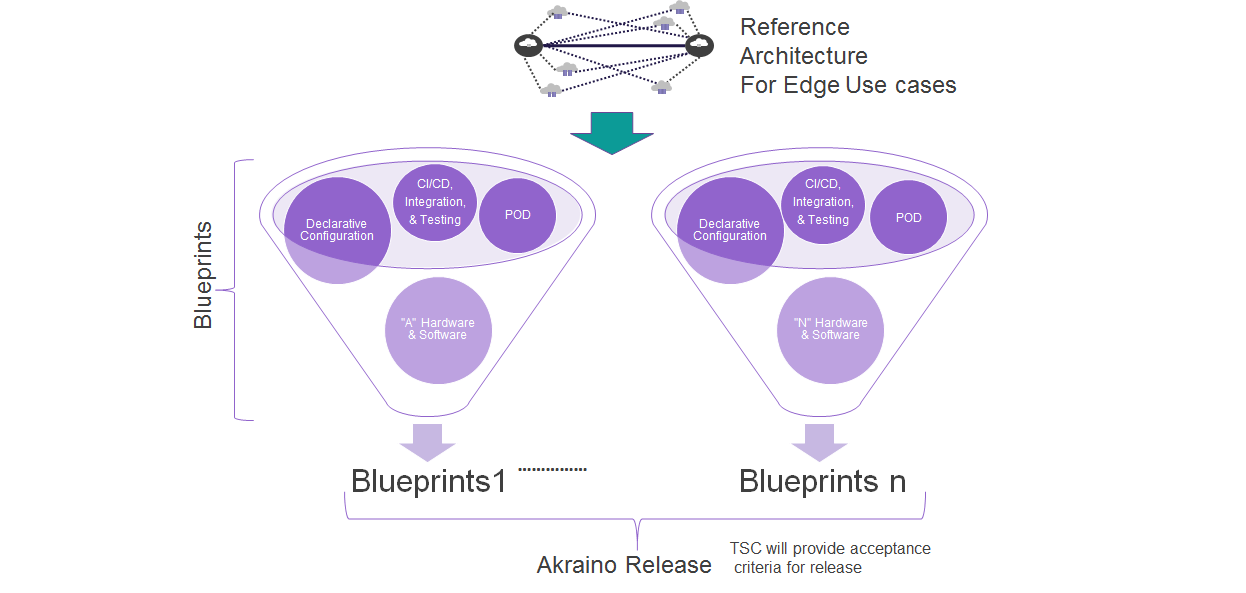In order to support end-to-end edge solution from the Akraino community, a blueprint is an approved and tested declarative configuration based upon:
- Use cases
- A given set of hardware and software
- An Blueprint
- An accompanying CI/CD
- Integration and Testing tools to enforce product quality
A reference architecture is provided for each use case, driving the corresponding blueprint. A set of Blueprints comprises an Akraino release. TSC will provide acceptance criteria for each release. See the Figure below.
For instance, a 5G Core or 5G access use case will require support for Service-Based Architecture (SBA) as an enabler of Cloud Native 5G implementations. SBA aims to evolve the 5G system in such a way that it will enable novel network architecture capabilities, e,g,, the re-use of services and flexible network slicing, by means of functionality offered as a service from the Network Functions (NF). The NF services will be implemented as containers. Therefore, the selected blueprint must provide support for containers and container management framework like Kubernetes. Furthermore, networking and storage needs of Kubernetes can be supported by Calico as a CNI (Container Networking Interface) plugin and Ceph as Software Defined Storage (SDS). Data plane needs can be supported by SR-IOV/OVS. A POD based on Cruiser can provide support for all control, compute, and storage nodes to be hosted on racks and physically connected and networked. Airship is used as the orchestration tool to deploy the Kubernetes based containerized cluster with support for Calico and Ceph. The physical underlay network provides L2 connectivity from the control and compute nodes to the TORs. Separate networks are provided for management, storage, Redfish API, and KSN. KSN provides an L2 transport network to setup L3 network using BGP route peering with Fabric TORs. Accompanying the CI/CD system and test automation tools provides the ability to integrate, test and deploy the Blueprint code. Finally, a fully declarative configuration management brings the blueprint together to support the use case.
Akraino uses blueprint concept to address specific Edge use cases. Blueprint is a declarative configuration of the entire stack i.e., edge platform that can support edge workloads and edge APIs. In order to address specific use cases, a reference architecture is developed by the community. A declarative configuration is used to define all the components used within that reference architecture such as Hardware, Software, tools to manage the entire stack, and point of delivery i.e., the method used to deploy in a site. In Summary, the declarative configuration is a prescriptive configuration, which will be developed and tested by the community. The intent of this community is to support production quality integration using upstream community code and Akraino community developed code to support the entire stack.
Akraino community intends to maintain such blueprints using full CI/CD integration and testing to support the code development by the community members.
TSC will provide acceptance criteria for each release. Below figure is the pictorial definition of the blueprints.
Similarly, other use cases such as for IoT, Wireline (xPON), Intelligent transport systems, AR/VR can be supported by other purpose-built blueprints.

